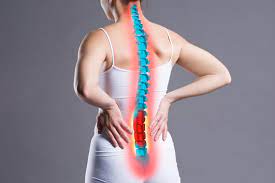Understanding Cervical Spondylosis or Causes Side effects and Treatment
Categories: Wealth Health

Understanding Cervical Spondylosis: Causes, Side effects, and Treatment
Cervical spondylosis is a condition where the joints and circles in the neck locale of the spine go through degeneration or mileage over the long run. This condition is normally alluded to as joint pain of the neck.
Causes:
Cervical spondylosis is brought about by age-related changes in the spine, which can prompt the accompanying:
- Herniated discs: As the plates in the neck district become not so much versatile but rather more fragile with age, they can foster breaks or tears, which can make the delicate focal point of the plate swell outwards.
- Bone spikes: The body might answer the mileage on the plates and joints by creating additional bone trying to balance out the area, which can prompt bone prods.
- Thickened ligaments: The tendons that associate the vertebrae in the neck area can turn out to be solid and thickened with age.
- Osteoarthritis: This is a degenerative joint sickness that happens when the ligament that covers the closures of bones erodes over the long haul, prompting bone-on-bone contact.
Symptoms:
The symptoms of cervical spondylosis can fluctuate contingent upon the seriousness of the condition. Normal side effects include:
- Torment and solidness in the neck, shoulders, and arms
- Deadness or shivering in the arms, hands, legs, or feet
- Shortcoming in the arms or legs
- Migraines, particularly toward the rear of the head
- Loss of equilibrium and coordination
Treatment:
The treatment for cervical spondylosis relies upon the seriousness of the condition and the side effects experienced. A portion of the normal treatment choices include:
- Meds: Non-steroidal mitigating drugs (NSAIDs) and muscle relaxants can be endorsed to decrease agony and irritation.
- Active recuperation: Activities and stretches can assist with working on the scope of movement in the neck and alleviate pain.
- Medical procedure: Medical procedure is just viewed as in serious situations where different therapies have not been effective. The most widely recognized a medical procedure for cervical spondylosis is a spinal combination.
- Way of life changes: Keeping up with great stance, utilizing ergonomic hardware, and keeping away from exercises that strain the neck can assist with keeping the condition from deteriorating.
- Elective treatments: Needle therapy, chiropractic, and back rub treatment can likewise give help to certain individuals with cervical spondylosis.
The Role of Exercise in Alleviating Cervical Spondylosis Symptoms
Cervical spondylosis is a condition that influences the cervical spine, which is the neck district of the spine. It is portrayed by degenerative changes during the bones, plates, and tendons of the neck, which can prompt agony and solidness in the neck, shoulders, and arms. Exercise can assume a significant part in reducing the side effects of cervical spondylosis.
Exercise can assist with reinforcing the muscles of the neck, shoulders, and upper back, which can assist with supporting the spine and lessen the strain on the plates and joints of the cervical spine. It can likewise further develop scope of movement and adaptability in the neck, which can diminish solidness and further develop portability.
A few activities that might be gainful for cervical spondylosis include:
- Neck extends: delicate stretches of the neck can assist with further developing scope of movement and decrease firmness. These can incorporate diverting the head from one side to another, shifting the head forward and in reverse, and moving the shoulders.
- Shoulder rolls: moving the shoulders advances and in reverse can assist with delivering pressure in the neck and shoulders.
- Jawline tucks: wrapping the jaw up towards the chest can assist with reinforcing the muscles of the neck and further develop pose.
- Opposition preparing: obstruction works out, for example, utilizing obstruction groups or loads, can assist with reinforcing the muscles of the neck, shoulders, and upper back.
It is essential to talk with a medical services proficient prior to beginning an activity program, particularly in the event that you have cervical spondylosis. They can assist with figuring out which activities are protected and suitable for your particular condition, and can give direction on the most proficient method to perform them accurately. It is likewise critical to begin gradually and progressively increment the power and length of your activity program to keep away from injury.